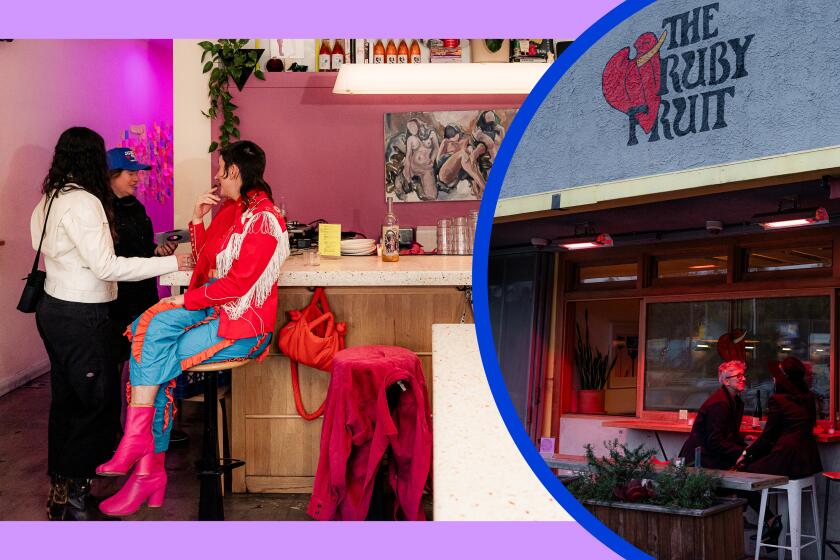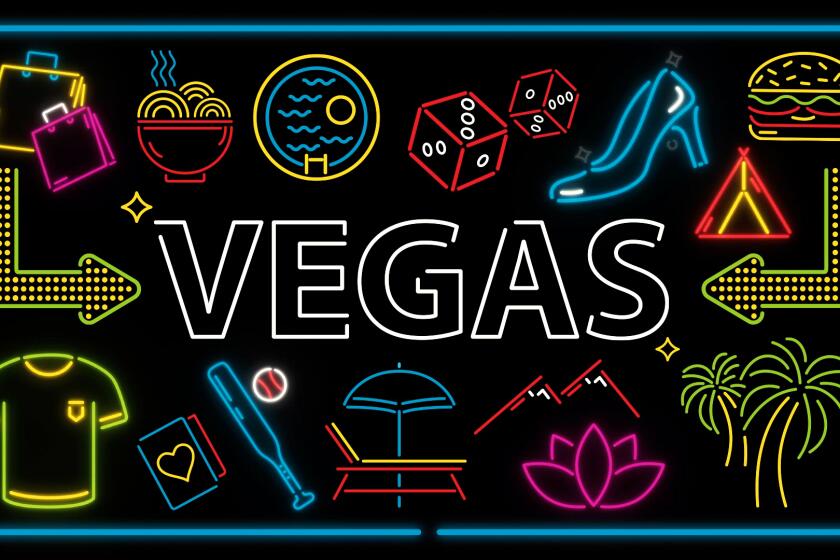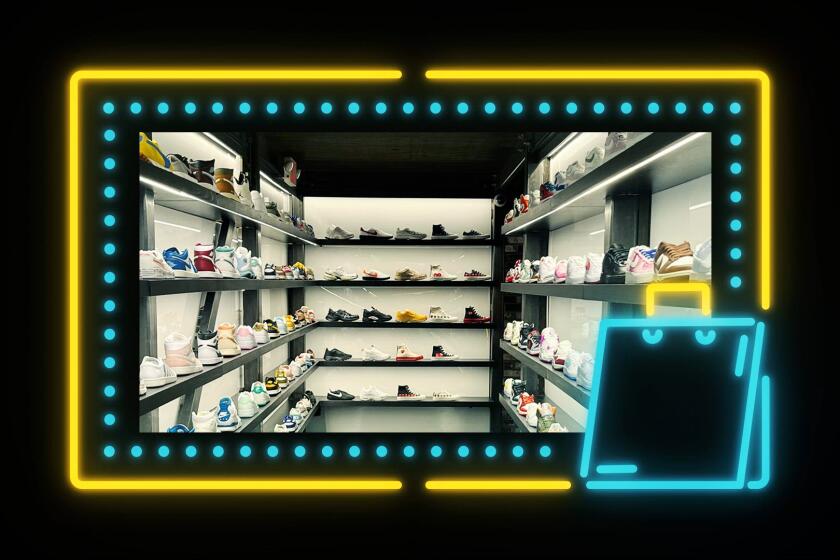Ray of Hope : Bradbury Foresees a Day When the L.A. River Is ‘Our Thames, Our Tiber’
RAY BRADBURY has a dream.
It isn’t a trip to Mars or to Atlantis or even to his birthplace of Waukegan, Ill. He won’t go by spaceship or even by train or airplane.
Bradbury dreams of taking a walking trip, for pleasure, through an integrated, revitalized and enchanting downtown Los Angeles.
That may be the most imaginative idea yet from the visionary poet, playwright, novelist and science-fiction writer who gave us the classic story, “The Martian Chronicles.”
The idea of walking for pleasure in Los Angeles goes against all the stereotypes of our mobilized metropolis. But Bradbury points out that Angelenos will fly 6,000 miles for the fun of walking their shoes off in London, Rome or Paris. Why not here?
Writing in the June issue of Designers West, Bradbury lays out his scheme for transforming downtown Los Angeles into a pedestrian’s delight. His plan would link the isolated communities of Little Tokyo, Olvera Street, Chinatown and “the intermingled Italian commercial isles” with the Music Center, the Civic Center and that almost-forgotten geographical joke--the Los Angeles River.
Yes, Bradbury foresees a day when the Los Angeles River, a thoroughfare more useful to motorcyclists and hot rodders than to boaters, will be our Thames, our Tiber, our Seine.
Why, he asks, do we like to walk in Paris? “The answer, of course, is that Paris is a continuous river of fascination, an assault of delight. The eye, the ear and the culinary nose are bombarded on every hand by color, light, sound and the scents of breads and foods adrift from 1,000 bakeries and 20,000 restaurants. The same, on a smaller scale, holds for London, Rome, Vienna and Madrid.”
Bradbury suggests that we create a kind of “yellow brick road” leading from the Music Center over a bridge and past the gushing fountain of the Civic Center mall, “which most people have never seen.”
The Music Center plaza would be covered with chairs and tables and wine-and-sandwich bars. With its rare view from Bunker Hill, it could be a delightful place to linger at any time of day or night.
The mall also would have curio shops and bookstalls that would bring many pedestrians into what is now a wasteland. As we walk along a refurbished Broadway to 1st Street and then to Little Tokyo, our “mosaic pedestrian pathway” would be made of Japanese tiles. The street would be lined with miniature lights and enticing small shops.
From Little Tokyo it would go past Union Station to Olvera Street, where the tile pathway would change to Mexican design. Then on past the Italian shops to Chinatown, all by way of a double-size walkway shaded by ivy and flowers by day and brightened by thousands of miniature lights at night.
Bradbury sees the path lined by curio stands, bookstalls and pushcart entrepreneurs peddling graphic arts, lithographs, etchings and watercolors from every land, “with, here and there, your honorable hot-dog, bagel or lemonade/wine-cooler establishment.”
Bradbury imagines that every half an hour mariachis might leave the Music Center to lead “new emigres from corn city and Hoboken”--and even Angelenos--along the festive path through the exotic river-side communities.
We could eliminate Bunker Hill if we wished, Bradbury allows, and “concentrate only on the bright creek, the compelling dry wash that would push and pull imaginations, young and old, to bounce off Tokyo but to land in Mexico City, rebound from Rome and land at last in echoes of Beijing.”
As usual, I am stirred by Bradbury’s vision but I have some doubts. To go from the Music Center to Little Tokyo requires a walk through the sterile glass-and-concrete monoliths of the Civic Center, which no yellow brick road could make exciting; also, unless we run water through it, which we aren’t going to do, and build scenic pathways along its sides, the L.A. River is never going to be anything but an eyesore, best ignored, as it is now.
But I’d like to see some chairs and tables and bookstalls and wine-and-sandwich bars on the Music Center plaza, for starters.
We can dream, Ray, can’t we?
Sign up for The Wild
We’ll help you find the best places to hike, bike and run, as well as the perfect silent spots for meditation and yoga.
You may occasionally receive promotional content from the Los Angeles Times.



